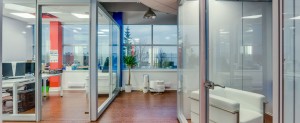Moveable walls  are a great solution for companies that require a degree of flexibility in their offices, and allow companies to alter layout without the expense and upheaval previously associated with doing so. The main benefits of these systems are well-known, but there are other, less well-known reasons why it makes sense to use them.
are a great solution for companies that require a degree of flexibility in their offices, and allow companies to alter layout without the expense and upheaval previously associated with doing so. The main benefits of these systems are well-known, but there are other, less well-known reasons why it makes sense to use them.
What Other Benefits Are Associated with Moveable Walls?
- They Don’t Smell – Whenever people consider renovations or decorations – both in the office and at home – we tend to focus on how the changes will look and, to some extent, what effect they will have on noise. It’s all too easy to ignore how the space will smell, once the work is complete. Unfortunately, the results can be distracting and even overpowering for employees who are moved into renovated workspaces. Paint and varnish fumes linger for a long time and can end up costing you money – staff may suffer from headaches, interviewees and clients may be put off ever having to visit you again. Using a system of moveable walls eliminates this issue altogether.
- They Are Environmentally Friendly – Drywall, plasterboard, bricks and other materials are difficult to tear down without damaging them and therefore usually end up getting thrown into landfill. Aside from being irresponsible, this type of attitude towards remodelling, in a 21st century business environment, can be bad P.R. If you want to propagate a company image of being environmentally conscious and green business practices, you’d better extend this to your office refurb. Moveable walls offer the simplest solution here – there’s no tearing down existing structural parts or a waste of materials.
- They Can Save You Tax Dollars – Unlike drywall construction, moveable walls are not usually considered to be structural components of a building – the structure existed intact before they were installed and could do so afterwards. Instead, they come under the same classification as furniture, fixtures and equipment. This is important, because it means they don’t legally change the structure of your office. If you were to put up a drywall construction, you could inadvertently cause your property tax to increase. Such an increase can be a substantial amount, too. Choosing the moveable option ensures that you’ll be safe from any such nasty surprises.
- They Facilitate Business as Usual – Standard office improvements used to involve a great deal of upheaval. Files were sent to storage and lost. Employees were forced to work in uncomfortable and unsuitable environments. Communication suffered, as staff and management were forced into separate locations. Staff morale plummeted as employees were asked to work in spaces without natural light, and have their daily commutes disrupted and lengthened due to the office renovations – with all the knock-on effects it had on their family and social lives. The mere fact of choosing the moveable option instead of drywall, contractors and dust, has vastly reduced the inconveniences your workforce is asked to bear, and the length of time they will need to endure it.
- They Are the Smart Option – From time to time, office renovations become a necessity, due to changes in the technology used. The latest generation of professionals has most likely never seen a filing cabinet or a physical in-tray. As technology advances, offices are becoming smart working hubs, in which communication, file and data storage, work assessments and other aspects of company work happen in one, compact space. At the same time, a greater importance has been placed on ergonomics.
Employees deserve to be comfortable and free to go about their work without disruption. In order to make structural changes across a large office space, companies need to make use of walls which can be demounted and moved easily.
